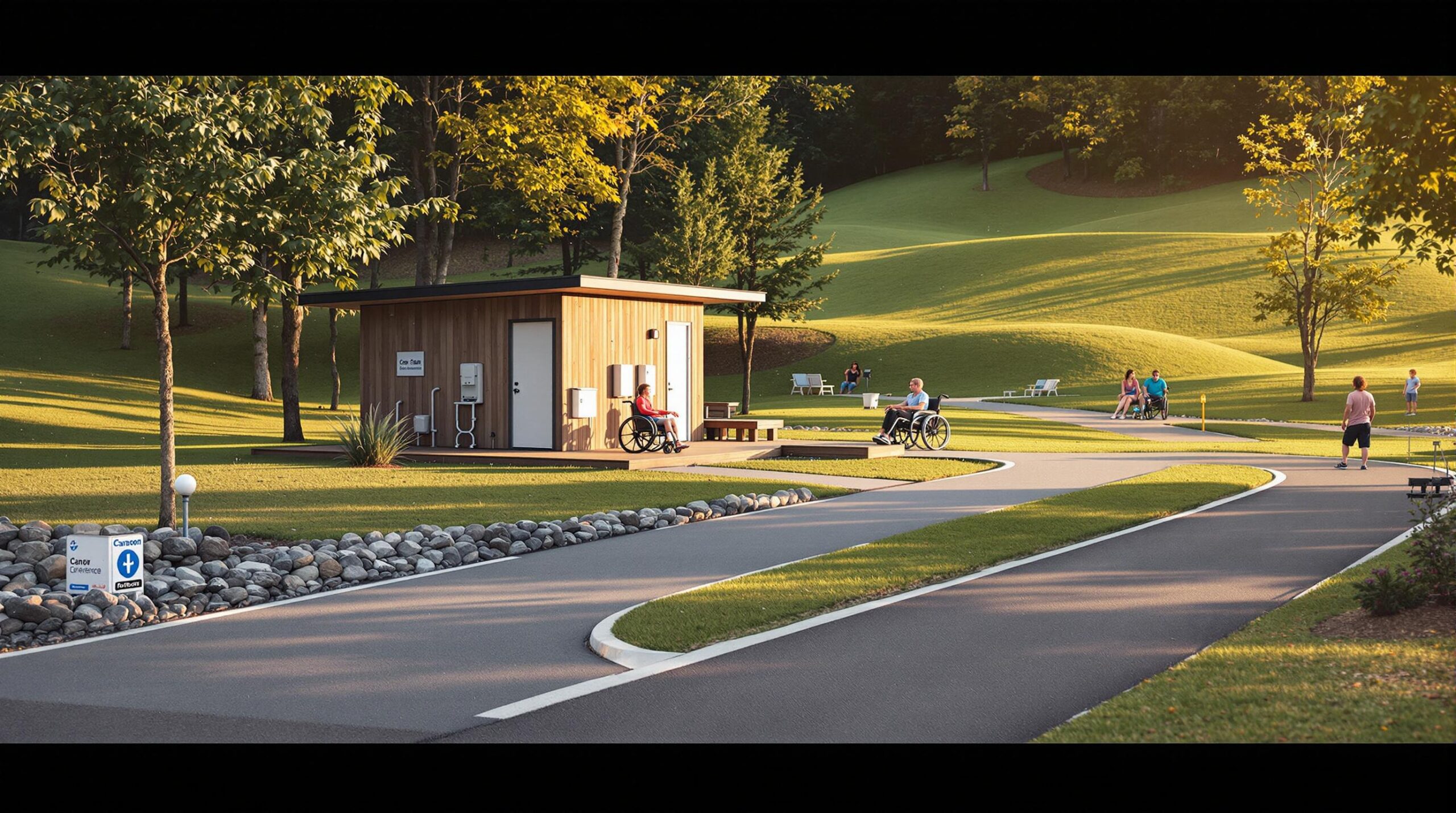Southwestern Nebraska’s state parks have introduced incremental renovations tailored to modern trends and visitor needs, spanning campground expansions, improved accessibility, and ecological care. Work has centered on making recreational areas more inclusive through new facilities and habitat-focused restorations that combine outdoor fun with responsible stewardship.
A noteworthy development at Lake McConaughy’s Martin Bay is the plan to build a full-service campground with 37 sites offering 50-amp electric hookups. Crews also intend to enhance the Martin Bay dump station to accommodate a growing number of recreational vehicles, based on recent details. By increasing campsite capacity and modernizing support facilities, officials aim to ensure a smoother experience for visitors arriving with large rigs.
Martin Bay and Cedar View boat ramps recently underwent needed maintenance that involved repairing concrete voids, costing $30,900. This work relied on Nebraska’s boating access program to keep critical water-entry points safe and functional. These steps align with an ongoing push toward balancing public access with ecological care.
Meanwhile, fish habitat projects remain a priority, reflecting the area’s emphasis on preserving healthy ecosystems. Future improvements, officials say, may build upon existing partnerships and expand opportunities for anglers who frequent the region. Such measures underscore a desire to protect natural resources for the long term.
Rock Creek State Recreation Area has installed an ADA-compliant vault toilet, along with new parking and walkways funded by $24,000 from Land and Water Conservation Funds and Capital Maintenance. These changes were completed in April 2025, marking a broader effort to improve the visitor experience for individuals with mobility challenges, according to a public report. Other southwestern Nebraska parks have seen similar updates addressing facility upkeep and accessibility.
Region-wide, many campsites now feature improved utilities while trail expansions and fishing access points continue to appear in stages. Officials have relied on resources such as park cash funds and the boating access program for a stable funding platform that supports long-term park sustainability. Collectively, these measures demonstrate a response to public interest in well-maintained outdoor spaces.
One widely accepted way to enhance these sites involves integrating eco-friendly practices. Selecting sustainable building materials and energy-efficient fixtures, including LED lighting or motion-sensor features, can reduce long-term costs and minimize environmental impact. Designing natural landscapes with low-water vegetation and native plants helps maintain balanced ecosystems and lowers maintenance demands. Establishing recycling or composting areas in common spaces can encourage eco-conscious visitor behavior and curb landfill waste. By adopting these measures, managers can preserve soil, wildlife, and water resources while limiting carbon footprints.
Such approaches tie in naturally with ongoing campground projects. By combining upgrades with thoughtful grading and resource management, construction teams can improve visitor comfort without compromising natural areas. The region’s emphasis on environmental care helps ensure that developments like Martin Bay’s planned campground and Rock Creek’s expanded facilities blend seamlessly with their surroundings.
Other recognized strategies focus on digital engagement tools that streamline guest experiences. Many travelers appreciate mobile-friendly reservation platforms allowing for quick booking and efficient check-in, which helps reduce wait times upon arrival. Reliable Wi-Fi hotspots or cellular boosters further improve satisfaction for visitors who need connectivity, especially those balancing travel with remote work. Digital orientation guides or mobile apps can incorporate maps, local area recommendations, and safety tips, easing staff workloads.
The benefits extend beyond convenience. By offering intuitive online booking and user-friendly site navigation, managers can help guests discover improvements such as expanded trails, fishing spots, or ADA-compliant additions. This saves time that staff members might otherwise spend answering basic questions, letting them devote more attention to specialized tasks or events.
While Martin Bay anticipates a modernized campground, several southwestern Nebraska sites have already introduced multi-faceted improvements. Buffalo Bill Ranch State Recreation Area added waterfront campsites, Lake Maloney built an ADA-friendly fishing pier, and Swanson SRA continues to expand trails and camp areas. Medicine Creek SRA plans additional cabin upgrades and shoreline cleanups, underscoring the region’s determination to promote consistent progress.
Sustained financing through the boating access program, park cash funds, and other federal and state sources helps ensure these projects remain on track. From updated lighting at Ash Hollow State Historical Park to enhanced shorelines at Lake Maloney, each improvement underscores a goal of welcoming more visitors while preserving local habitats for future generations. With extensive upgrades and careful planning, southwestern Nebraska’s state parks offer a model that can resonate well beyond the region’s borders.


